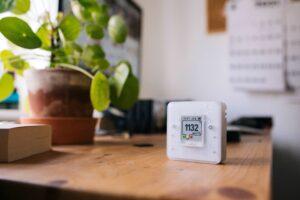In today’s fast-paced digital world, our ability to monitor and control various aspects of our environment has reached unprecedented levels of sophistication. One technology that has been quietly but profoundly transforming our lives is airflow sensors. These unassuming devices have the power to revolutionize how we perceive and interact with the air around us. In this blog post, we’ll explore the multifaceted world of airflow sensors and how they are reshaping our understanding of air quality and more. Buckle up for a journey into the future of environmental awareness!
Unlocking the Secrets of Air Quality
Beyond the obvious applications in HVAC systems, airflow sensors are finding new and exciting roles in our lives. For instance, they are becoming indispensable tools in smart homes. Helping homeowners optimize ventilation and air purification systems based on real-time data. With these sensors, you can ensure that your home always has the perfect balance of fresh air and energy efficiency, creating a healthier and more eco-friendly living space. Moreover, industries like agriculture are utilizing airflow sensors to monitor and control air circulation in greenhouses, leading to increased crop yields and reduced environmental impact.
Enhancing Health and Safety in the Workplace
The workplace is another domain where airflow sensors are making a significant impact. In the wake of the COVID-19 pandemic, ensuring proper ventilation has become paramount for employee safety. Airflow sensors are now being integrated into office spaces to monitor air quality and provide instant feedback on ventilation effectiveness. This proactive approach helps create a safer and healthier work environment, boosting employee morale and productivity. Additionally, in industries where workers are exposed to hazardous fumes or particles, such as manufacturing or construction, these sensors play a crucial role in maintaining safe working conditions.
The Future Beckons: Advancements in Airflow Sensors Technology

As technology continues to evolve, so too do airflow sensors. Miniaturization, enhanced connectivity, and more accurate data collection are just a few of the recent advancements. Imagine a world where your smartphone can provide real-time air quality data for your current location, helping you make informed decisions about outdoor activities. With the rise of the Internet of Things (IoT), these sensors are becoming an integral part of the broader digital ecosystem, enabling smarter and more responsive cities, transportation systems, and beyond.
A Call to Action: Embracing Airflow Sensors Technology
As we stand on the threshold of a future filled with possibilities driven by airflow sensors. It’s essential for individuals, industries, and governments to recognize their significance and take proactive steps. Whether you’re a homeowner looking to improve indoor air quality, a business owner seeking to enhance workplace safety. Or a city planner envisioning smarter, greener urban spaces. Embracing and investing in airflow sensor technology is a step in the right direction.
The power of these unassuming devices lies not only in their ability to gather data but in their capacity to transform that data into actionable insights. By harnessing the potential of airflow sensors, we can create environments that are not only more comfortable and secure but also more sustainable and efficient. It’s time to embrace this digital expertise, integrate airflow sensors into our daily lives, and pave the way for a healthier, safer, and more connected world. The future is in the air—let’s breathe it in and make the most of it.
Photo Credit:
stock.adobe.com – BLKstudio
stock.adobe.com – Girts
